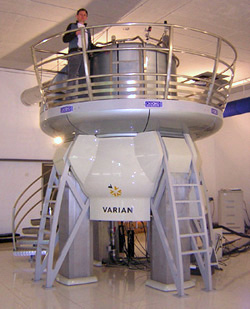|
Chitosan
Chitosan is a linear polysaccharide composed of randomly distributed β-(1→4)-linked D-glucosamine (deacetylated unit) and ''N''-acetyl-D-glucosamine (acetylated unit). It is made by treating the chitin shells of shrimp and other crustaceans with an alkaline substance, such as sodium hydroxide. Chitosan has a number of commercial and possible biomedical uses. It can be used in agriculture as a seed treatment and biopesticide, helping plants to fight off fungal infections. In winemaking, it can be used as a fining agent, also helping to prevent spoilage. In industry, it can be used in a self-healing polyurethane paint coating. In medicine, it is useful in bandages to reduce bleeding and as an antibacterial agent; it can also be used to help deliver drugs through the skin. History In 1799, British chemist Charles Hatchett experimented with decalcifying the shells of various crustaceans, finding that a soft, yellow and cartilage-like substance was left behind that ... [...More Info...] [...Related Items...] OR: [Wikipedia] [Google] [Baidu] |
Chitin
Chitin (carbon, C8hydrogen, H13oxygen, O5nitrogen, N)n ( ) is a long-chain polymer of N-Acetylglucosamine, ''N''-acetylglucosamine, an amide derivative of glucose. Chitin is the second most abundant polysaccharide in nature (behind only cellulose); an estimated 1 billion tons of chitin are produced each year in the biosphere. It is a primary component of cell walls in fungi (especially filamentous and mushroom-forming fungi), the exoskeletons of arthropods such as crustaceans and insects, the radulae, cephalopod beaks and Gladius (cephalopod), gladii of molluscs and in some nematodes and diatoms. It is also synthesised by at least some fish and lissamphibians. Commercially, chitin is extracted from the shells of crabs, shrimps, shellfish and lobsters, which are major by-products of the seafood industry. The structure of chitin is comparable to cellulose, forming crystalline nanofibrils or whiskers. It is functionally comparable to the protein keratin. Chitin has proved useful ... [...More Info...] [...Related Items...] OR: [Wikipedia] [Google] [Baidu] |
Polysaccharide
Polysaccharides (), or polycarbohydrates, are the most abundant carbohydrates found in food. They are long-chain polymeric carbohydrates composed of monosaccharide units bound together by glycosidic linkages. This carbohydrate can react with water (hydrolysis) using amylase enzymes as catalyst, which produces constituent sugars (monosaccharides or oligosaccharides). They range in structure from linear to highly branched. Examples include storage polysaccharides such as starch, glycogen and galactogen and structural polysaccharides such as hemicellulose and chitin. Polysaccharides are often quite heterogeneous, containing slight modifications of the repeating unit. Depending on the structure, these macromolecules can have distinct properties from their monosaccharide building blocks. They may be amorphous or even insoluble in water. When all the monosaccharides in a polysaccharide are the same type, the polysaccharide is called a homopolysaccharide or homoglycan, but when more t ... [...More Info...] [...Related Items...] OR: [Wikipedia] [Google] [Baidu] |
D-glucosamine
Glucosamine (C6H13NO5) is an amino sugar and a prominent precursor in the biochemical synthesis of glycosylated proteins and lipids. Glucosamine is part of the structure of two polysaccharides, chitosan and chitin. Glucosamine is one of the most abundant monosaccharides. Produced commercially by the hydrolysis of shellfish exoskeletons or, less commonly, by fermentation of a grain such as corn or wheat, glucosamine has many names depending on country. Although a common dietary supplement, there is little evidence that it is effective for relief of arthritis or pain, and is not an approved prescription drug in the United States. Dietary supplement Oral glucosamine is a dietary supplement and is not a prescription drug in the United States. Glucosamine is marketed as a supplement to support the structure and function of joints, and the marketing is targeted to people with osteoarthritis. Commonly sold forms of glucosamine are glucosamine sulfate, glucosamine chondroitin, gluco ... [...More Info...] [...Related Items...] OR: [Wikipedia] [Google] [Baidu] |
Glucosamine
Glucosamine (C6H13NO5) is an amino sugar and a prominent precursor in the biochemical synthesis of glycosylated proteins and lipids. Glucosamine is part of the structure of two polysaccharides, chitosan and chitin. Glucosamine is one of the most abundant monosaccharides. Produced commercially by the hydrolysis of shellfish exoskeletons or, less commonly, by fermentation of a grain such as corn or wheat, glucosamine has many names depending on country. Although a common dietary supplement, there is little evidence that it is effective for relief of arthritis or pain, and is not an approved prescription drug in the United States. Dietary supplement Oral glucosamine is a dietary supplement and is not a prescription drug in the United States. Glucosamine is marketed as a supplement to support the structure and function of joints, and the marketing is targeted to people with osteoarthritis. Commonly sold forms of glucosamine are glucosamine sulfate, glucosamine chondroitin, glu ... [...More Info...] [...Related Items...] OR: [Wikipedia] [Google] [Baidu] |
Nanocellulose
Nanocellulose is a term referring to a family of cellulosic materials that have at least one of their dimensions in the nanoscale. Examples of nanocellulosic materials are microfibrilated cellulose, cellulose nanofibers or cellulose nanocrystals. Nanocellulose may be obtained from natural cellulose fibers through a variety of production processes. This family of materials possesses interesting properties suitable for a wide range of potential applications. Terminology Microfibrilated cellulose Micro cellulose (MFC) is a type of nanocellulose that is more heterogeneous than cellulose nanofibers or nanocrystals as it contains a mixture of nano- and micron-scale particles. The term is sometimes misused to refer to cellulose nanofibers instead. Cellulose nanofibers Cellulose nanofibers (CNF), also called nanofibrillated cellulose (NFC), are nanosized cellulose fibrils with a high aspect ratio (length to width ratio). Typical fibril widths are 5–20 nanometers with a w ... [...More Info...] [...Related Items...] OR: [Wikipedia] [Google] [Baidu] |
Atomic Mass Unit
The dalton or unified atomic mass unit (symbols: Da or u, respectively) is a unit of mass defined as of the mass of an unbound neutral atom of carbon-12 in its nuclear and electronic ground state and at rest. It is a non-SI unit accepted for use with SI. The word "unified" emphasizes that the definition was accepted by both IUPAP and IUPAC. The atomic mass constant, denoted , is defined identically. Expressed in terms of , the atomic mass of carbon-12: . Its value in SI units is an experimentally determined quantity. The 2022 CODATA recommended value of the atomic mass constant expressed in the SI base unit kilogram is:This value serves as a conversion factor of mass from daltons to kilograms, which can easily be converted to grams and other metric units of mass. The 2019 revision of the SI redefined the kilogram by fixing the value of the Planck constant (), improving the precision of the atomic mass constant expressed in SI units by anchoring it to fixed physica ... [...More Info...] [...Related Items...] OR: [Wikipedia] [Google] [Baidu] |
Nuclear Magnetic Resonance Spectroscopy
Nuclear magnetic resonance spectroscopy, most commonly known as NMR spectroscopy or magnetic resonance spectroscopy (MRS), is a Spectroscopy, spectroscopic technique based on re-orientation of Atomic nucleus, atomic nuclei with non-zero nuclear spins in an external magnetic field. This re-orientation occurs with absorption of electromagnetic radiation in the radio frequency region from roughly 4 to 900 MHz, which depends on the Isotope, isotopic nature of the nucleus and increases proportionally to the strength of the external magnetic field. Notably, the resonance frequency of each NMR-active nucleus depends on its chemical environment. As a result, NMR spectra provide information about individual functional groups present in the sample, as well as about connections between nearby nuclei in the same molecule. As the NMR spectra are unique or highly characteristic to individual compounds and functional groups, NMR spectroscopy is one of the most important methods to identify ... [...More Info...] [...Related Items...] OR: [Wikipedia] [Google] [Baidu] |
Activation Energy
In the Arrhenius model of reaction rates, activation energy is the minimum amount of energy that must be available to reactants for a chemical reaction to occur. The activation energy (''E''a) of a reaction is measured in kilojoules per mole (kJ/mol) or kilocalories per mole (kcal/mol). Activation energy can be thought of as a magnitude of the potential barrier (sometimes called the energy barrier) separating minima of the potential energy surface pertaining to the initial and final thermodynamic state. For a chemical reaction to proceed at a reasonable rate, the temperature of the system should be high enough such that there exists an appreciable number of molecules with translational energy equal to or greater than the activation energy. The term "activation energy" was introduced in 1889 by the Swedish scientist Svante Arrhenius. Other uses Although less commonly used, activation energy also applies to nuclear reactions and various other physical phenomena. Temperature ... [...More Info...] [...Related Items...] OR: [Wikipedia] [Google] [Baidu] |
Rate Equation
In chemistry, the rate equation (also known as the rate law or empirical differential rate equation) is an Empirical relationship, empirical Differential equation, differential Expression (mathematics), mathematical expression for the reaction rate of a given reaction in terms of concentrations of chemical species and constant parameters (normally rate coefficients and partial orders of reaction) only. For many reactions, the initial rate is given by a power law such as :v_0\; =\; k[\mathrm]^x[\mathrm]^y where and are the molar concentrations of the species and usually in Mole (unit), moles per liter (molarity, ). The exponents and are the partial ''orders of reaction'' for and , respectively, and the ''overall'' reaction order is the sum of the exponents. These are often positive integers, but they may also be zero, fractional, or negative. The order of reaction is a number which quantifies the degree to which the rate of a chemical reaction depends on concentrations of the ... [...More Info...] [...Related Items...] OR: [Wikipedia] [Google] [Baidu] |
Fungi
A fungus (: fungi , , , or ; or funguses) is any member of the group of eukaryotic organisms that includes microorganisms such as yeasts and mold (fungus), molds, as well as the more familiar mushrooms. These organisms are classified as one of the kingdom (biology)#Six kingdoms (1998), traditional eukaryotic kingdoms, along with Animalia, Plantae, and either Protista or Protozoa and Chromista. A characteristic that places fungi in a different kingdom from plants, bacteria, and some protists is chitin in their cell walls. Fungi, like animals, are heterotrophs; they acquire their food by absorbing dissolved molecules, typically by secreting digestive enzymes into their environment. Fungi do not photosynthesize. Growth is their means of motility, mobility, except for spores (a few of which are flagellated), which may travel through the air or water. Fungi are the principal decomposers in ecological systems. These and other differences place fungi in a single group of related o ... [...More Info...] [...Related Items...] OR: [Wikipedia] [Google] [Baidu] |





